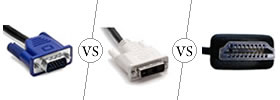Difference between CC and BCC
Key difference: “Cc” stands for “Carbon Copy,” while “Bcc” stands for “Blind Carbon Copy.”

Essentially when one is sending an e-mail, they see three fields that need to be filled out in the address section:
To: Primary recipients
Cc: Carbon copy
Bcc: Blind carbon copy
“To” is the traditional addressing system, where one inputs the e-mail address of the person to whom the e-mail is addressed or labeled to.
“Cc” stands for “Carbon Copy” or at times “Courtesy Copy”. This is where the address of secondary recipients or other interested parties is inputted. These are the people to whom the e-mail is not addressed to but they may still be interested in the content of the mail. For example: if an employee e-mails another employee about a department matter, and feels that the department head should also know about the matter, so he CCs the e-mail to the head.
 “BCC” stands for “Blind Carbon Copy” or at times “Blind Courtesy Copy”. This is where the address of tertiary recipients is inputted. All the other recipients: primary, secondary and tertiary won’t be able to see the e-mail addresses in the BCC field. Hence, the fact that the e-mail is also sent to these people is concealed. The BCC field recipients are secretly being informed of the communication, without the knowledge of the other recipients. It is common to use the Bcc: field when addressing a very long list of recipients, or a list of recipients that should not necessarily know each other. For example: if an employee e-mails another employee about something inappropriate, the second employee can reply to the e-mail but keep the manager in BCC, so that the manager may be aware of the first employee indiscretion.
“BCC” stands for “Blind Carbon Copy” or at times “Blind Courtesy Copy”. This is where the address of tertiary recipients is inputted. All the other recipients: primary, secondary and tertiary won’t be able to see the e-mail addresses in the BCC field. Hence, the fact that the e-mail is also sent to these people is concealed. The BCC field recipients are secretly being informed of the communication, without the knowledge of the other recipients. It is common to use the Bcc: field when addressing a very long list of recipients, or a list of recipients that should not necessarily know each other. For example: if an employee e-mails another employee about something inappropriate, the second employee can reply to the e-mail but keep the manager in BCC, so that the manager may be aware of the first employee indiscretion.
A Concise Example:
If a department head is implementing a new policy in his department. He will e-mail the manager the details of the policy, while he can CC the employees in the department, so that they may also be aware of the policy. The department head may also BCC the heads of other departments, or the cooperative level executives, so that they may also be aware of the policy change. However, he may not want to share the e-mail addresses of the other heads with all the employees.
Image Courtesy: janefriedman.com, online-tech-tips.com









Add new comment